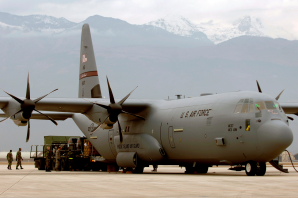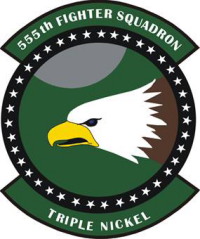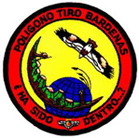| Military |
| Commercial |
| General Aviation |
| Plane Spotting |
| Industry |
| Airshows |
| Agenda |
| Publications |
| Staff |
|
Training & deployments: |
|||||||||||||||||||||||||||||||||||||||||||||||||||||||||||||||||||||||||||||||||||||||||||||||||||||||||||||||||||||
|
|||||||||||||||||||||||||||||||||||||||||||||||||||||||||||||||||||||||||||||||||||||||||||||||||||||||||||||||||||||
|
|||||||||||||||||||||||||||||||||||||||||||||||||||||||||||||||||||||||||||||||||||||||||||||||||||||||||||||||||||||
|
Once
more time, the 31st Fighter Wing (FW) made a training deployment to
Zaragoza’s city and, as usual, it was the first one of the year. Each
fighter squadron from the USAFE (United States Air Force Europe) makes
two Weapons Training Deployments (WTD) a year, taking advantage of the
favourable weather conditions during winter months. The WTD 09-01, as
this training is actually called, allowed American pilots to train in
Spanish aerial space and maintain their operation abilities at top
level. The Spanish northern sky is much less crowded than that of
Northern Italia, where Aviano air base (Aviano AFB), home of the 31st
FW, is placed.
The deployment of support material for the operation of the Vipers from Aviano began a week before the arrival of the fighters to Zaragoza. Thus, on January, the 9th, the load of the material that the C-130J-30 143rd Airlift Wing (AW) was to deliver the following day to the Aerial Base in Zaragoza (BAZ) began. Therefore, and for seven days, the necessary equipment for the deployment was transported to Zaragoza, not only from Aviano, but also from the Aerial Base in Ramstein (Germany) and Moron (Spain).
Weapons Training The training itself consisted basically on shoot and bomb training with training bombs BDU-33D, Mk-76 Model 5 and 20 mm ammunition PGU-28A/B. the training was carried out in the shooting range of Bardenas Reales in Navarra.
The typical mission involved the deployment of a flight of four planes headed for the shooting range. With an estimated fly of 10 minutes the shooting maneuvers were carried out from North to South. The pilot was presented with different targets, duly indicated, which included a simulated airfield equipped with old and beaten-up F-4 Phantoms, a SAM site and several additional targets. The pilot is to attack according to the assigned mission and the appropriate weapon depending on the kind of target he has to blow down. Once the air to surface mission is over, the planes had to head to an air civil traffic restricted area to carry out a different kind of aerial combat: DACT or Discimilar Air Combat Training, against planes from the Ejercito del Aire (EdA, Spanish Airforce) When this air to air mission is fulfilled, the Vipers went back to Zaragoza, having done all in all approximately one hour flight per plane. Before the first ‘party’ had come back, the second one took off, with similar flight plans and combat training
Bardenas shooting range The Shooting range of the barracks in Bardenas is a military training camp inaugurated as far as 58 ago, and is the only one that the Spanish Air force has still in operation, it functions as an independent unit in that Air force. It depends on the Aerial Combat Command (Mando Aéreo de Combate, MACOM), and also on the General Aerial Command (Mando Aéreo General, MAGEN). There more than one hundred people work every day, among them there are 6 officers, 18 non-commissioned officers, 74 professional soldiers and 5 civilians. Nowadays, this range in Bardenas is not only used for the training of the personnel from the Spanish Air Force, but it is also used, in certain occasions, by the Spanish Army and several NATO countries. These annual practises sum up approximately 2000; which represents only 20% of the total capacity of the range.
These installations are also used for CSAR training missions with Super Puma helicopters from the 803 squadron of the Aerial Rescue Team. They are also used by the Sappers’ Squadron of Paratroopers from Alcantarrilla, who employ laser signals to show the targets to the combat planes, and by the Squadron for the Support to the Aerial Deployment (Escuadrón de Apoyo al Despliegue Aéreo, EADA) from the Zaragoza Air Base (BAZ), which deploy short range antiaircraft artillery to monitor with their radars the movements of the Spanish Army planes which fly over the zone. The installations of the range include two targets for bombing training and a section for canyon shooting, whose targets are equipped with microphones that measure the amount of impacts that they get, transmitting this information to the computers on the control tower of the range, where the controllers who conduct these exercises are. Besides, inside the range there is a simulated airfield with several planes set around and it is defended by a SAM position. There are as well numerous and different additional installations where the material which is used as target is prepared. On December the 21st 2008 the Spanish Ministry of Defence and the Bardenas Reales Region, in Navarra, reached an agreement for the hiring of some land for the Military Aerial Training Camp of Bardenas Reales. This agreement extends the use of the mentioned shooting range until 2028. Spanish contribution The EdA had at their disposal an important quantity of means and personnel for the right fulfilment of the WTD 09-01. Among the personnel from the BAZ and the one from the army deployed for the occasion there were not only pilots, mechanics and armourers, but also support team for aerial deployment, for coordination and liaison, aerial control, security and fire-fighting units. Regarding the aerial equipment that was used, the EdA took part on the WTD 09-01 with their front line units. The Ala 15 (15th wing) with its EF-18 played as local, and the Ala 12 (12th wing) from Torrejon also sent their Hornets, while the Ala 11 and 14 sent Eurofighters and Mirages F-1M respectively, these last ones went back to their bases after training routines. Such routines were similar to those carried out by the Americans, though the Spanish planes eventually took off in the first place.
On the other hand, taking into account the necessity of air refuelling, the Ala 31 (31st wing) (also from Zaragoza) made good use of their KC-130H from the 311 squadron. Finally, after 3 weeks of stay in Zaragoza, on February the 13th, the withdrawal of the 555 FS took place, beginning with the return of the F-16C to Aviano. Logistic flights extended for 3 days more, allowing the returning of personnel and equipments to their usual settlements.Zaragoza, May 1st. 2009
|
|||||||||||||||||||||||||||||||||||||||||||||||||||||||||||||||||||||||||||||||||||||||||||||||||||||||||||||||||||||
|
|
|||||||||||||||||||||||||||||||||||||||||||||||||||||||||||||||||||||||||||||||||||||||||||||||||||||||||||||||||||||
|
Headline photo |
|||||||||||||||||||||||||||||||||||||||||||||||||||||||||||||||||||||||||||||||||||||||||||||||||||||||||||||||||||||
|
|
|||||||||||||||||||||||||||||||||||||||||||||||||||||||||||||||||||||||||||||||||||||||||||||||||||||||||||||||||||||
|
The author thanks to Guillermo Acerbi, Pablo
Blanco y Nestor La Orden
for their help. |
|||||||||||||||||||||||||||||||||||||||||||||||||||||||||||||||||||||||||||||||||||||||||||||||||||||||||||||||||||||
© 2009 - 2011 - Gaceta Aeronáutica - Todos los derechos reservados
Back


